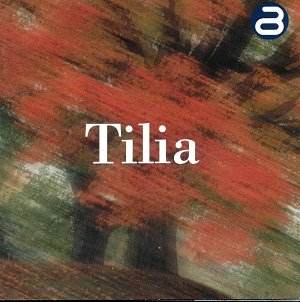Tilia’s
group photo – nine young musicians in jeans and white t-shirts,
full of navel exposure and daringly open to the waist (chaps only)
– gives a new slant to their musical ethos. Though some might
call it folk music the producer and sleeve note writer Jiří
Štilec prefers it to be seen in the contemporary continuum of
World Music. Well I won’t argue with him and I’d be the first
to complain if these talented musicians were corseted in Moravian
finery and buckle but the fact remains that if you begin an album
with Nepi, Jano you summon up the spirit of Bohemian and
Moravian folk music in no uncertain terms, the better, one supposes,
to enrich and enlarge it in the tracks that follow. All of them,
I have to say, congenial, imaginative and deliciously engaging.
Tilia
are essentially a classically oriented folk string quintet with
an augmentation of wind and percussion; the singer is mezzo Marta
Dunová. They enliven the repertoire through acute choice
of subject material and imaginative orchestration and colours.
So Smrtí tanec has its fare share of medieval inflexions,
martial percussion and lusty recorders whilst Na kopečku
stojí borovička (as with many of these numbers the arrangement
is by conductor and bass player Petr Vyroubal) is an old style
song enlivened by counterpoint and variation of instrumentation.
Marta Dunová certainly has a big voice, though she can
scale it down charmingly, as in the next song. Vyroubal’s Valachian
dances are laced with humour and he draws out a Renaissance feel
in Osud lidský (they’re notably successful in suggesting
links and correlations between music of different times). Their
evocation of these seventeenth century tunes is vibrant and lusty
but also clear and technically adroit. Jaroslav Krček’s Three
Dances in the Old Style date from the 1980s and were partly inspired
by Dürer’s The Ship of Fools. They are crisp and
perky and delightfully shaped, laced with drone fiddle and sparky
first violin line; the third grows in restrained fervour, over
a plinking percussion, with its folk drive rooted deep in historicity.
Otmar Mácha contributes the Songs of Horňácka,
ebullient and reflective arrangements. For lovers of fun and
charm try the fluty airiness of them or the quirky finality of
the last, Zahraj ně, hudečku!
Excellently
produced and recorded (in the Domovina Studios, no less) this
is a really enjoyable and imaginative disc. Whatever you want
to call it, wherever you expect to find it in the record racks,
you’ll have a lot of fun with Tilia.
Jonathan
Woolf

